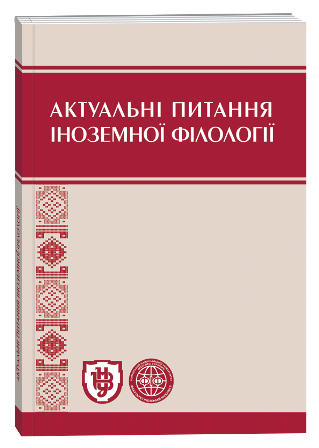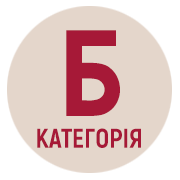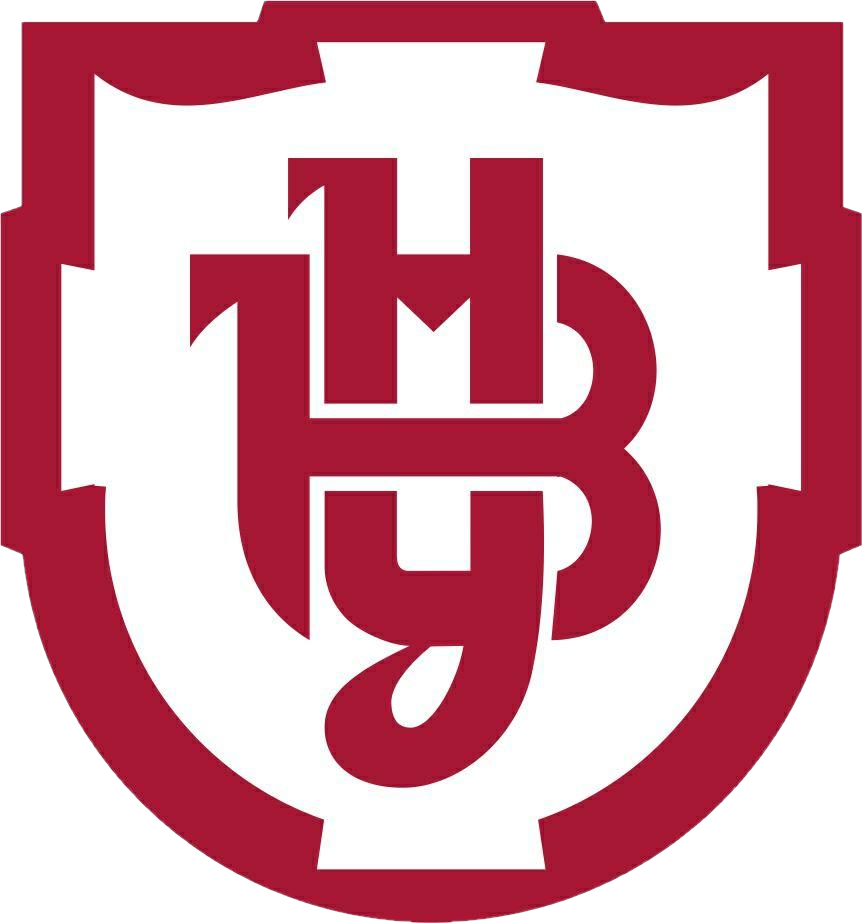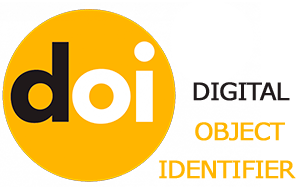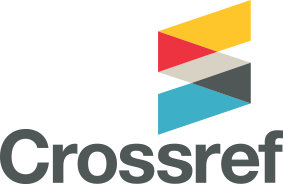MULTIMODALITY AND POLYCODENESS IN MODERN LINGUISTIC STUDIES: SCHOOLS, FIGURES AND APPROACHES
Keywords:
multimodality, multimodal linguistics, mode, symbiosis, modalityAbstract
This paper describes the concepts of "multimodality" and "polycodedness, and suggests appropriate definitions for them. The focus is on the interpretation of concepts, given that they are most often used in modern studies, exploring the interaction of verbal, nonverbal and paraverbal means in English-language communicative spaces. It has been found that scientists view these concepts in different ways, and in their own thinking, they employ the definitions and paradigms which they are accustomed to utilizing. A new definition of multimodality is proposed, taking into account those definitions which have been used up to now. It is emphasized that multimodality involves the coexistence of at least two modes within a single word, conjugate, sentence, or text. It is noted that the mode is a resource which may or may not be considered to have the nature of a sign in which some meaning is encoded. The specificity of different modes as the key means of producing values is substantiated. A detailed description of a new linguistic field- multimodal linguistics-has been suggested. Its focus is the symbiosis of verbal, nonverbal and paraverbal means used during communication in the English communicative space in oral and written speech. The specificity of multimodal approaches to the study of heterogeneous constructs in English-language linguistic studies is substantiated. The principal research schools that deal with multimodality, along with their geographical locations, their representatives and the main vectors of their research work are listed. The focus is on a series of events (conferences, roundtables, and symposiums) devoted to multimodality that have taken place over the last few years. The key areas of their work and the audiences which they target are outlined. Publishing houses which issue academic and scientific publications devoted to multimodality are identified. The focus is on magazines in which multimodalists highlight the results of their own research.
References
Гривко А. В. Основні напрями вивчення особливостей полікодового тексту підручника / А. В. Гривко // Проблеми сучасного підручника : зб. наук. праць / [ред. кол. ; голов. ред. – О. М. Топузов]. – К. : Педагогічна думка, 2016. – Вип. 16. – С. 81–91.
Добровольська Д. М. Полікодовість соціальної реклами: перекладацький аспект [Електронний ресурс] / Д. М. Добровольська // Одеський лінгвістичний вісник. – 2015. – Режим доступу : http://www.oljournal.in.ua/v5/15.pdf.
Кибрик А. А. Мультимодальная лингвистика / А. А. Кибрик // Киогнитивные исследования. – Москва : ИП РАН, 2010. – Вип. IV. – С. 134–152.
Колегаева И. М. Музейный каталог как вид поликодового текста / И. М. Колегаева // Записки з романо-германської філології. – Одеса : КП ОМД, 2014. – Вип. 1 (32) – С. 92–101.
Колегаєва І. М. Полімодальність відчуттів у дзеркалі полікодовості тексту, або ще раз про антропоцентризм у лінгвістиці [Електронний ресурс] / І. М. Колегаєва // Записки з романо-германської філології. – 2015. – Вип. 2. – С. 105–112. – Режим доступу: http://nbuv.gov.ua/UJRN/zrgf_2015_2_16.
Кононець Ю. В. Вербально-візуальна єдність полікодових текстів / Ю. В. Кононець // Проблеми семантики, прагматики та когнітивної лінгвістики. – 2010. – Вип. 18. – С. 186–192.
Кузнецова М. О. Полікодовий характер вторинного дискурсу англомовних текстів жанру фентезі / М. О. Кузнецова // Наукові записки Національного університету “Острозька академія”. Серія : Філологічна. –2015. – Вип. 58. – С. 105–107. – Режим доступу : http://nbuv.gov.ua/UJRN/Nznuoaf_2015_58_41.
Макарук Л. Л. Мультимодальна лінгвістика: термінологічний апарат і вектори аналізу / Л. Л. Макарук // Науковий вісник СНУ ім. Лесі Українки. Серія : Філологічні науки. Мовознавство. – 2015. – № 6 (307). –С. 64–70.
Марченко В. В. Структурні особливості полікодового рекламного тексту / В. В. Марченко, М. О. Нікитюк // Молодий вчений. – 2018. – № 7. – С. 436–439.
Помірко Р. С. Аномальні принципи формування полікодового тексту / Р. С. Помірко, С. В. Кіпень // Нова філологія. – 2013. – № 57. – С. 70–73.
Солдатова Л. П. Поняття “дискурс”: проблеми визначення / Л. П. Солдатова // Мовні і концептуальні картини світу. – 2013. – Вип. 46. – С. 32–42.
Солощук Л. Вербальні та невербальні аспекти дискурсивної взаємодії як відображення полікодової природи комунікативого процесу / Л. Солощук // Науковий вісник Східноєвропейського національного університету імені Лесі Українки. Філологічні науки. Мовознавство. – 2013. – № 19. – С. 233–237.
Сподарик О. Функційний аналіз параграфемного коду полікодового художнього прозового тексту / О. Сподарик // Науковий вісник Східноєвропейського національного університету імені Лесі Українки. – 2017. – № 3. – С. 281–287.
Швецова М. Г. Полікодовість рекламного тексту як модульної дискурсивної одиниці / М. Г. Швецова, В.І. Мельник // Studia philologica. – 2013. – Вип. 2. – С. 66–69.
Шевченко І. С. Англомовний кінодискурс у полікодовому вимірі / І. С. Шевченко // Якісна мовна освіта у сучасному глобалізованому світі: тенденції, виклики, перспективи : матеріали І Всеукраїнської науково-практичної конференції (м. Суми, 23–24 листопада 2017 року) / за ред. В. А. Глущенко. – Суми : Сумський державний університет, 2017. – С. 196 –199.
Auckland University of Technology People [Electronic resource]. – Access mode : https://mrc.aut.ac.nz/people. 17. Bateman J. Text and Image: a Critical Introduction to the Visual / J. Bateman. – London; New York : Routledge, 2014. – 276 р.
Bremen Institute for Transmedial Textuality Research [Electronic resource]. – Access mode : http://www.fb10.uni-bremen.de/bitt/.
Center for Multimodal Communication[Electronic resource]. – Access mode : https://www.sdu.dk/en/ om_sdu/institutter_centre/c_cmc.
Center for multimodal research [Electronic resource]. – Access mode : https://www.ucl.ac.uk/ioe/departments-and-centres/centres/centre-multimodal-research.
Deborah W. R. Multimodal Interaction Analysis: the Affosdances of Multimodal Interaction Analysis for Studying the Beginnings of Literacy / W. R. Deborah // Essay. Peabody College. Vanderbilt University. – 2012. – Р. 1– 41. 22. Gibbons A. Multimodality, Cognition and Experimental Literature / А. Gibbons. – London; New York : Routledge, 2012. – Р. 8–25. 23. Halliday M. A. K. An Introduction to Functional Grammar. 2nd ed. / М. А. К. Halliday. – London : Edward Arnold, 1994. – 212p.
Jewitt C. Introducing Mutimodality / С. Jewitt, J. Bezemer, K. L. O’Halloran. – London : Routledge, 2016. – 232 p.
Jewitt C. The Routledge Handbook of Multimodal Analysis / С. Jewitt. – London : Routledge, 2009. – 340 p. 26. Kress G. Multimodality: A Social Semiotic Approach to Contemporary Communication / G. Kress. – London : Routledge, 2009. – 1sted. – 236 p.
Multimodal Analysis Lab [Electronic resource]. – Access mode : http://multimodal-analysis-lab.org/concept/.
Multimodal Research Center [Electronic resource]. – Access mode : https://mrc.aut.ac.nz/.
O’Halloran K. L. Multimodal Discourse Analysis / K. L. O’Halloran // Companion to Discourse. – London; New York : Continuum, 2011. – P. 120–137. 30. O'Halloran К. L. Multimodal Studies: Exploring. Issues and Domains / К. L. O’Halloran, В. А. Smith. – London : Routledge, 2011. – 270 p.
Serafini F. Typography as Semiotic Resource / Frank Serafini, Jennifer Clausen // Journal of Visual Literacy. – 2012. – No. 31 (2). Р. 1–16. – DOI : 10.1080/23796529.2012.11674697
University of Amsterdam [Electronic resource]. – Access mode : http://www.uva.nl/.
Van Leeuwen T. Multimodality / Т. Van Leeuwen // The Routledge handbook of applied linguistics / еd. J. Simpson. – New York : Routledge, 2011. –Р. 668–682.
Downloads
Published
How to Cite
Issue
Section
License

This work is licensed under a Creative Commons Attribution-NonCommercial 4.0 International License.
